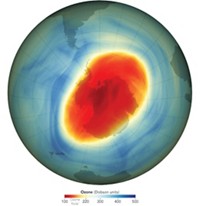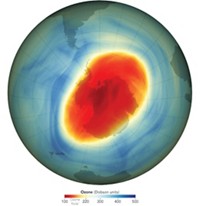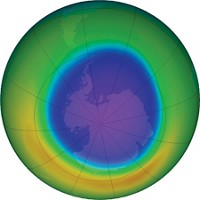Advertisement
Grab your lab coat. Let's get started
Welcome!
Welcome!
Create an account below to get 6 C&EN articles per month, receive newsletters and more - all free.
It seems this is your first time logging in online. Please enter the following information to continue.
As an ACS member you automatically get access to this site. All we need is few more details to create your reading experience.
Not you? Sign in with a different account.
Not you? Sign in with a different account.
ERROR 1
ERROR 1
ERROR 2
ERROR 2
ERROR 2
ERROR 2
ERROR 2
Password and Confirm password must match.
If you have an ACS member number, please enter it here so we can link this account to your membership. (optional)
ERROR 2
ACS values your privacy. By submitting your information, you are gaining access to C&EN and subscribing to our weekly newsletter. We use the information you provide to make your reading experience better, and we will never sell your data to third party members.
Atmospheric Chemistry
Leaks of CFCs threaten ozone layer recovery and climate, researchers say
Aging equipment and plastic foam release chemicals
by Cheryl Hogue
March 17, 2020
| A version of this story appeared in
Volume 98, Issue 11

More ozone-depleting chemicals than previously thought are leaking out of old air conditioners and plastic foam, an international team of scientists reports (Nat. Commun. 2020, DOI: 10.1038/s41467-020-15162-7).
The findings have implications for the recovery of Earth’s stratospheric ozone layer—which absorbs most ultraviolet radiation from the sun—and for climate change. The chemicals are chlorofluorocarbons (CFCs), known to deplete ozone, and are also potent greenhouse gases. They were formerly used as refrigerants and as blowing agents for foam.
Production of the chemicals known as CFC-11 and CFC-12 virtually ceased globally in 2010 in compliance with a global treaty, the Montreal Protocol on Substances that Deplete the Ozone Layer. But atmospheric measurements show that releases of these chemicals are continuing, says a team of researchers led by Megan Lickley, a doctoral student in climate science at the Massachusetts Institute of Technology. Lickley and her colleagues took into account previous studies that identified unexpected emissions and likely illicit production of CFC-11 in northeastern China.
The CFCs produced during the 1970s were typically used as spray-can propellants or solvents and were therefore quickly released into the atmosphere. In contrast, about 90% of CFC-11 and CFC-12 manufactured during the 1990s went to “contained” uses, such as in refrigeration equipment and foam insulation, the researchers say.
If CFC-11 and CFC-12 continue to leak from aging equipment and foam, recovery of the Antarctic ozone hole could be delayed by about 6 years, Lickley and her coauthors estimate. Plus, these CFCs also act as greenhouse gases, with a climate-warming effect equivalent to about 9 billion metric tons of carbon dioxide.
To help ensure that ozone hole recovery continues, governments have discussed the possibility of destroying CFCs contained in old equipment and foams under the Montreal Protocol. But they haven’t taken binding action to do so.





Join the conversation
Contact the reporter
Submit a Letter to the Editor for publication
Engage with us on Twitter